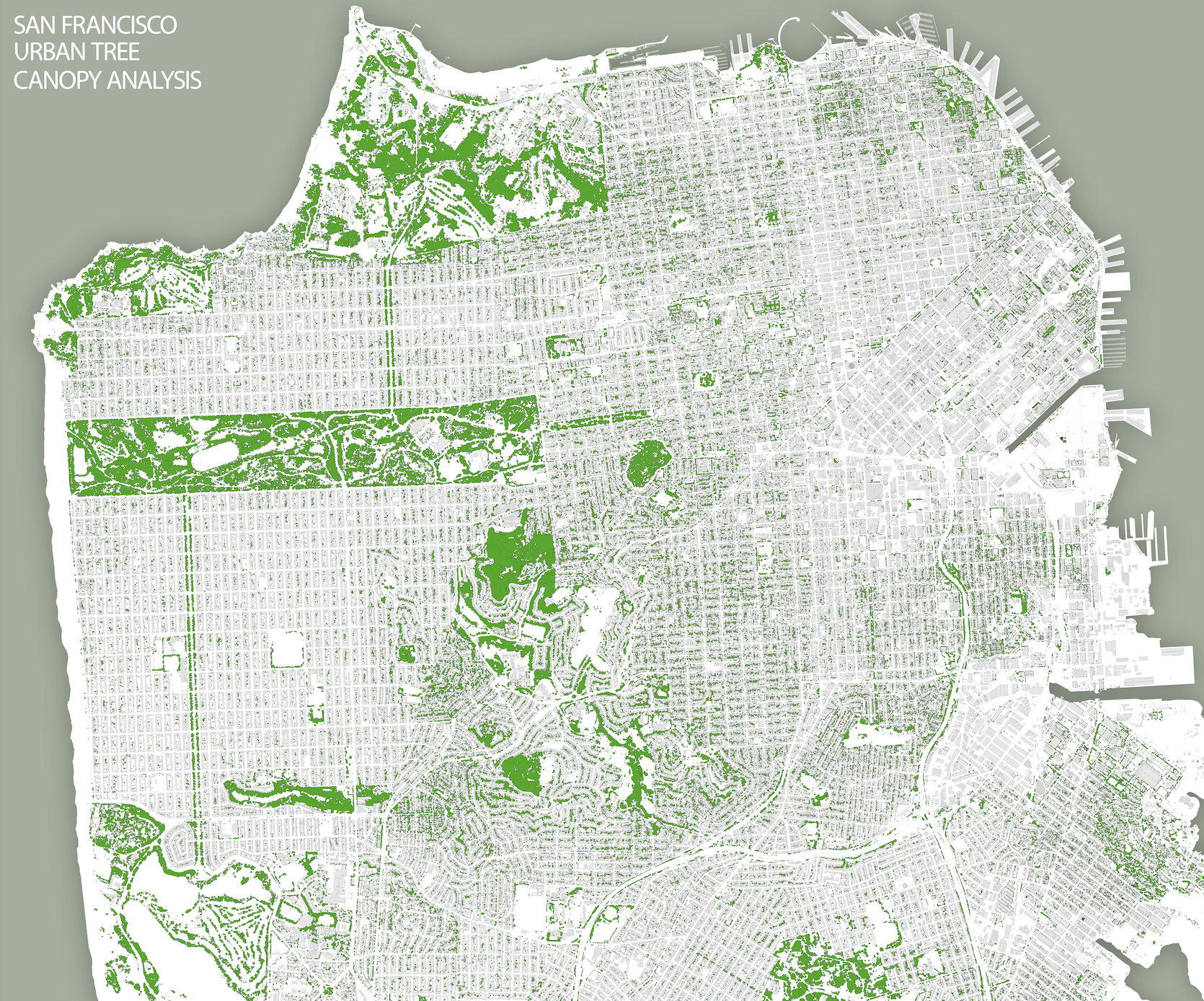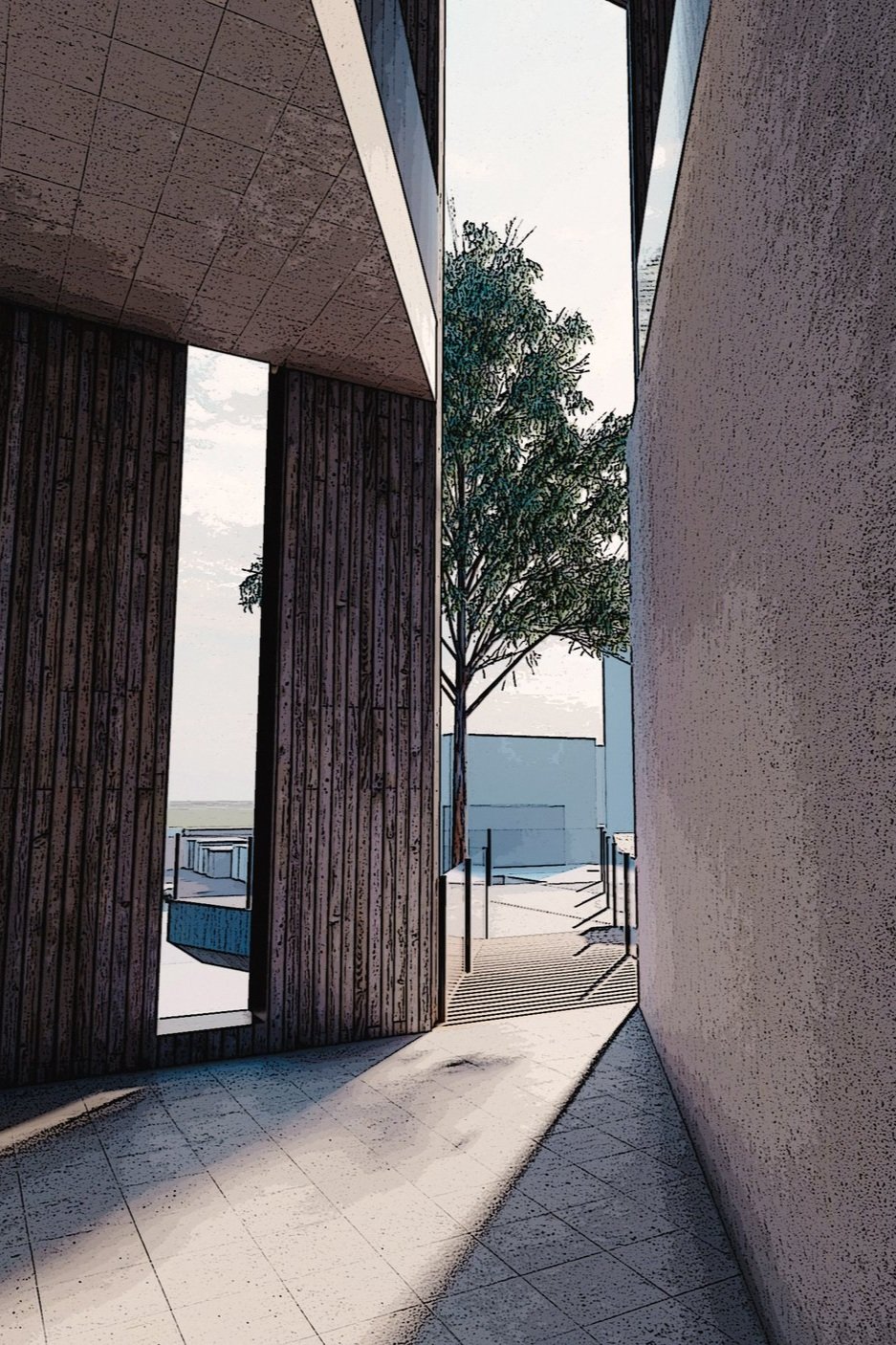
New Old growth
A study in the introduction of green spaces in an ever changing city-scape. This project takes place in the Sunset District of San Francisco.
In exploring San Francisco, it is easy to notice that although the urban green spaces are considered in the cities limits, these spaces are not heavily utilized to their full potential. San Francisco has one of the lowest percentage of urban canopy coverage in the U.S. There are many efforts set in place to attempting to put more canopies in the city, however it lacks funding and many of the strategies look more at planting street trees.

Undersanding place
-
As a part of our program, we were asked to design a space that is able to house and promote the well being of threatened or endangered species.
-
Foreign investments are made in big cities up and down the west coast. These foreign investment buildings remain vacant and unused. This project is required to be a luxury apartment building, with the expectation that investors will purchase these buildings.
-
San Francisco’s Outer Sunset District is a growing neighborhood that has a community that has changed significantly over the past twenty years. Now housing younger families and commuters working in the city, the district now needs more spaces that can promote healthy lifestyles and larger community spaces.
Site Analysis
Beach Proximity
The site is within a mile of the beach which provides the residents and the Marbled Murrelet with good view of the beach.
Private to Public
There is already a lot of green spaces hidden behind the current buildings in these neighborhoods. The goal with this Residential Building is to provide a view into these private green spaces and begin this transition from Private to Public green spaces.
Golden Gate Park
With the park to the north there is a gradual transition from dense green space into the green environments of the urban development.
Proposal
This site is on a corner with an exposed north and east wall allowing an interaction with the public as well as an optimal position on the slope of the site so that the height of the building wont have a negative affect on the buildings to its east up the hill.
Understanding ecosystems +
design with intent
California Buckeye (second floor)
Fully grown at 10 - 20 ft. tall with an average of a 30 foot spread at its crown. Is quite an attractive tree with blooming flowers and seeds in the spring. It requires 6 - 8 hours of sunlight per day and has deeper root systems. Excellent focal point.
Blue Gum Tree (third floor)
Tall evergreen tree endemic to southeastern Australia. Can grow to a height of 148 feet tall but if maintained only will grow to 20 - 30 feet. Root systems are larger and need 2 cubic feet per each square foot of branch projection.
Coastal Live Oak (fourth floor)
A beautiful evergreen oak that is native to this area of California. At a mature height the tree can reach 10 - 20 meters tall. Its branches are known to stretch horizontally as opposed to vertically and can span 15 - 35 feet wide. They flower in the spring time and winter time.
Sweet Bay (fifth floor)
Require trimming and pruning, and need to have its soil churned or its “pot” replaced every two-three years. It can be easily transported, so it could be brought into the space fully grown. Very shallow roots and widespread branch system.












